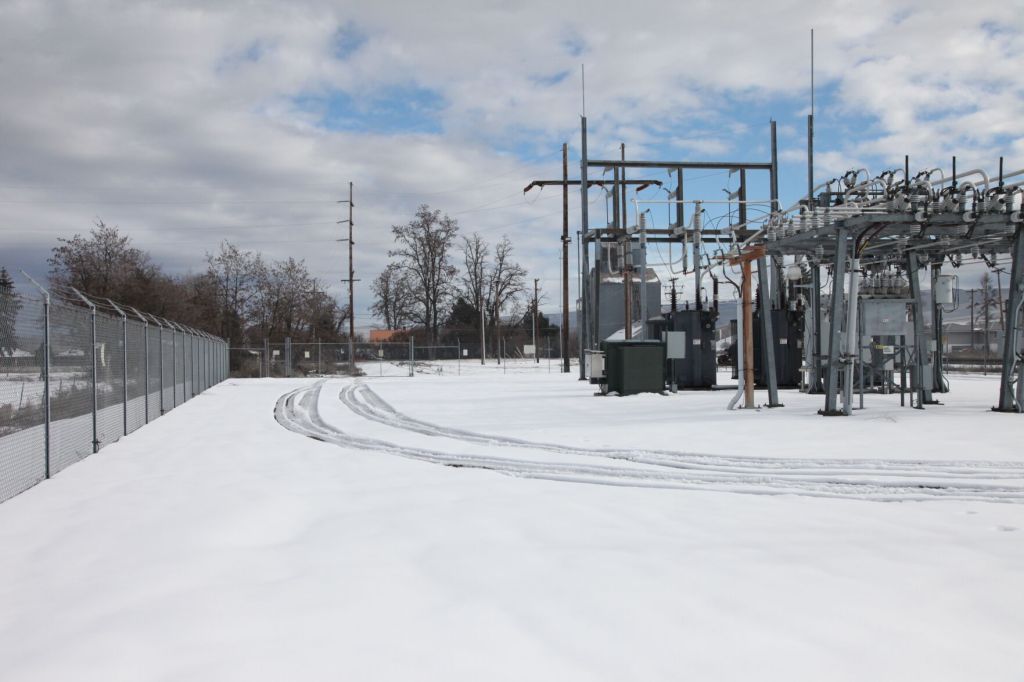Many factors add up in electric rate increases
Published 5:15 am Sunday, January 28, 2024

- An electrical substation operates Jan. 25, 2024, near the Mission Market down the hill from Wildhorse Resort & Casino near Pendleton. Pacific Power has asked the Oregon Public Utility Commission to approve a 16.9% residential rate hike, effective next year.
PENDLETON — What goes up stays up, when it comes to electrical rates. So it seems.
Trending
It depends on who is moving the energy around.
Pacific Power announced approximately a 12.8% rate hike starting Jan. 1.
Umatilla Electric Cooperative announced a 3.9% hike starting Oct. 1, 2023.
Trending
The smallest player in the local market, the city of Milton-Freewater, had a rate hike the same day and that was 5%.
One reason for raising rates is the exponential costs of infrastructure, the prices for cables, transformers and other equipment has shot up greatly over the past few years.
“It has been very challenging, in the past,” said Milton-Freewater City Manager Limda Hall, “the post-COVID years for electrical equipment, transformers, wire, conduit, poles, and the like. They spiked by record amounts during COVID and they haven’t come back down.”
Hall said some of these record price jumps are around 400%.
“The bigger factor would be the investment in infrastructure increases related in part to more costly materials for making improvements,” said Simon Gutierrez, a spokesman for Pacific Power. “But basically it’s investing in the resiliency of the grid. So things like updating power equipment, wildfire mitigation, all those things add up real quick.”
Electrical providers have faced big lawsuits in the wake wildfire that power lines may have started. Hall said the situation puts energy providers between the proverbial rock and a hard place.
“Now they have to choose in a time of crisis,” she said. “Do you shut your power completely down so that you can’t contribute to a fire? The flip side of that is, now you have left the surrounding property owners without electricity to pump water. There’s no good answer.”
“These are costs that came from other areas,” Gutierrez said, “so it’s not directly related. Obviously, wildfire litigation does come at some cost but we’re looking at ways of addressing that through regulatory processes. I’m sure you’re aware we’ve appealed the most recent ruling that was the James case, and in other situations, we’re settling with homeowners and other parties as well, from Southern Oregon in particular, so it’s not baked into this rate action.”
The James case is complicated but one of the findings of the court on Jan. 4 was that 17 plaintiffs should receive an award from PacificCorp of $90 million.
“Certainly there’s an expense associated with wildfire litigation, but we’re taking that up with with the courts themselves,” Gutierrez said. “We do our very best to make sure that our equipment doesn’t start fires.”
All these companies buy electricity at whatever price they can get, or negotiate, and sell it to consumers at a higher price.
“The transition adjustment mechanism is due to the rising cost of purchasing power,” Gutierrez said. “Our annual power forecast has increased, so that’s one part of it. The power cost adjustment mechanism is about a 4% increase. So these are all baked together. The increase is related to a spike in the cost of buying energy off the open market in 2022, and that was the year impacted by extreme weather. The renewable adjustment clause is a smaller increase that allows for the development of renewable energy.”
Gutierrez said the Oregon solar incentive program resulted in an overall decrease of .1%,“so investment in renewables is actually paying dividends for customers.”
“When we’re talking about raising rates, we know it affects every single family, even a percent of a percent,” said Jodie Thomas, Umatilla Electric Cooperative public relations supervisor. “So our executive staff made a statement saying it was needed to cover the gap for the 80% of our revenue going to purchase power.”
Thomas said her company buys power from the Northwest Wholesale Energy Market under fixed contract terms. She said they can also buy from Bonneville Power Authority or market resources, “so we have a team here on the executive board that evaluates those purchases daily.”
Hall said her city’s energy purchases are done under contracts negotiated more than 50 years ago when the city received a business pitch to help construct a couple dams on the Columbia River.
“Those were 50 year contracts, which expired in the early 2000s,” she said, “and they were renegotiated, still for a very reasonable rate. So we get about 40% of our power from those contracts and the rest from contracts with BPA.”









